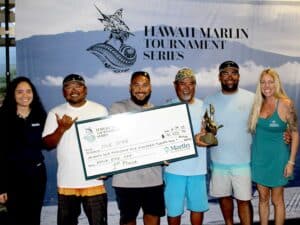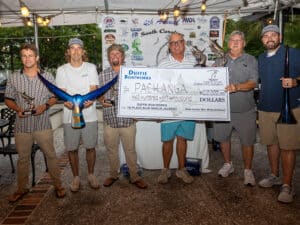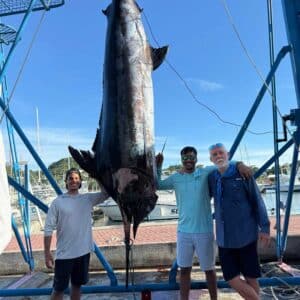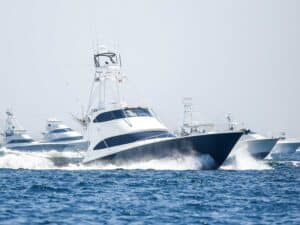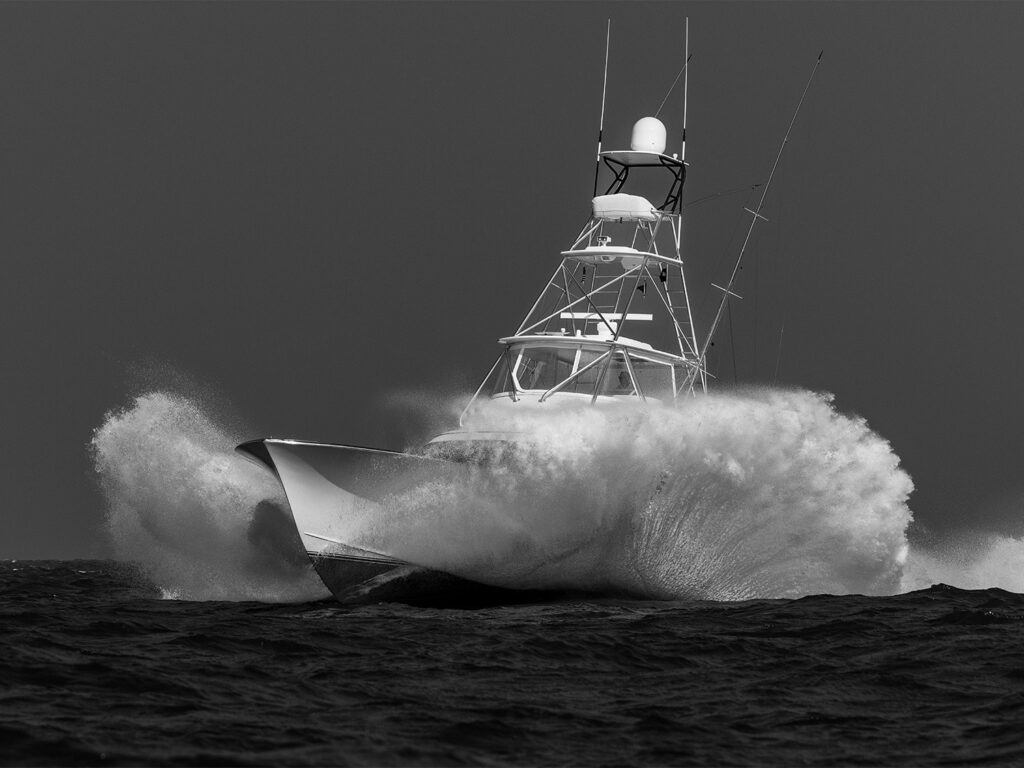
Special delivery: Sign up for the free Marlin email newsletter. Subscribe to Marlin magazine and get a year of highly collectible, keepsake editions – plus access to the digital edition and archives.
We all know that finishing first in high-profile billfish tournaments requires lots of skill, time, money and luck. The trophies that are awarded aren’t the pivotal reason boats turn out to compete, but it does feel right when the quality of the trophy matches the caliber of the competition.
To create awards that hold up to such standards, artists must wield the same intensity and passion that tournament teams bring to their sport. Before competitive anglers can even begin to battle billfish, trophy artists have already contended with their own. Chris Costello, Hanes Hoffman and Maru Panameño are just a few who coax billfish from wood, metal and plaster, harnessing the life buried within the medium. Bringing those fish to the surface is no easy task. It’s a grueling process, one chock-full of backstories that are often overlooked when enjoying the art of winning. We’d like to change that by going behind the scenes to see how and why these three trophy masters chose to make a living through another’s reward.
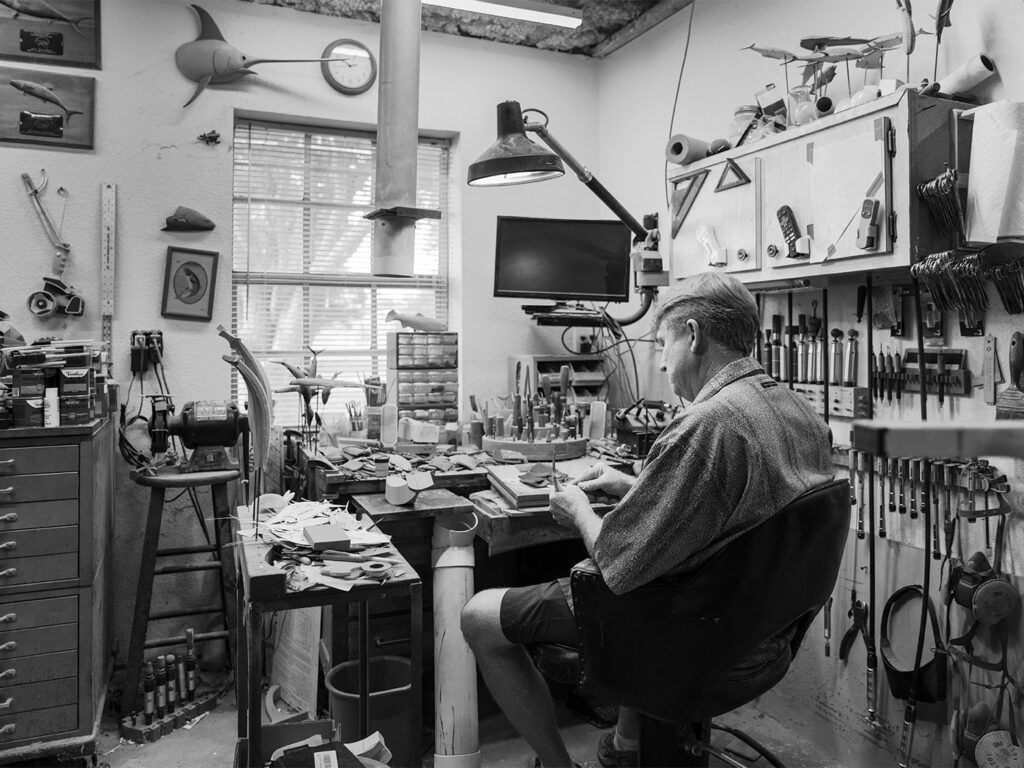
Chris Costello, Cocoa Beach, Florida
Whether talking to him over the phone or meeting him for the first time, Chris Costello is noticeably shy. Perhaps that is because his stunning wood carvings do much of the talking for him. With rich chocolate and caramel hues, the basswood he so painstakingly carves gives way to an astounding amount of unique detail for a variety of offshore species. While he offers other types of awards in his business, FishingTournamentTrophies.com, the carved-wood sculptures are Costello’s signature, with origins that can be traced back to a singular source: his father’s love for ducks.
In the 1970s, Costello’s father, Peter Costello, carved award-winning duck decoys out of his home in the maple-studded hillsides of Vermont. As he continued to take home top honors for his work, he considered turning his art into a career. The elder Costello moved his young family to Florida’s Space Coast in the 1980s, and it was there that his focus shifted.
Shortly after joining the Florida Sport Fishing Association and the members learning of his woodworking skills, Costello was asked to try his hand at carving a sailfish for their annual billfish tournament. His hand would prove to be extraordinarily good, and thus his career of creating sport-fishing trophies began, a trade he would later share with his son, Chris.
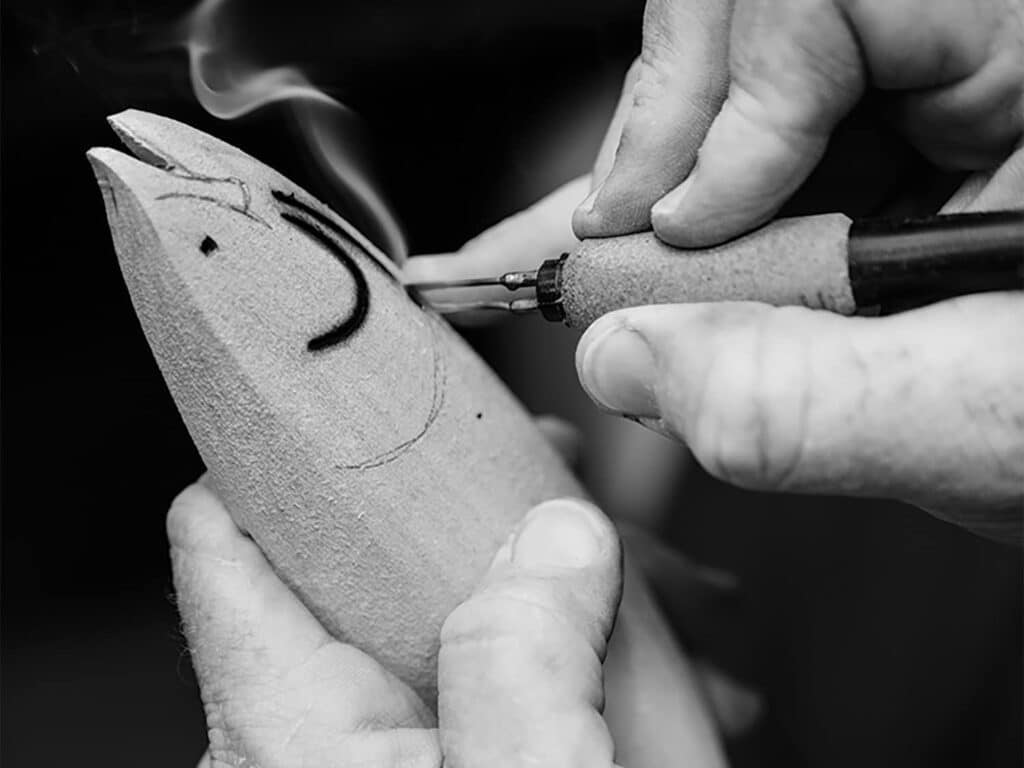
“My dad is the most positive person I know,” Chris Costello says. “He’s just a loyal and good guy, the kind of man you want in your corner. He was such a great marketer in those early years of the business, placing phone calls to various people in the industry to offer up his services. I have so much respect for him, and I don’t think I could have ever done all of that.”
While his father was busy making connections with high-profile industry players such as the South Carolina Governor’s Cup, the Ocean City Marlin Club and AFTCO, the younger Costello helped around in the shop. “I made myself useful to earn some extra money growing up,” he says. “I liked the machines and the tools, but honestly, I never thought I’d be doing what I am now—I really thought I would do anything but this.” But after four years at Florida State University, Chris eased back into the art.
During that time, Peter expanded his business to include specially crafted cabinet knobs and jewelry to his artistic skillset, and as a result, Chris took over most of the trophy-making, a venture that now produces more than 1,000 trophies per year. Of that number, Chris estimates that upwards of 400 of them are carefully carved fish trophies. These pieces, while beautiful, come with some challenges. Chris admits that it’s tedious work that requires an insane amount of patience to create something with saws, grinders, knives and wood-burning pens.
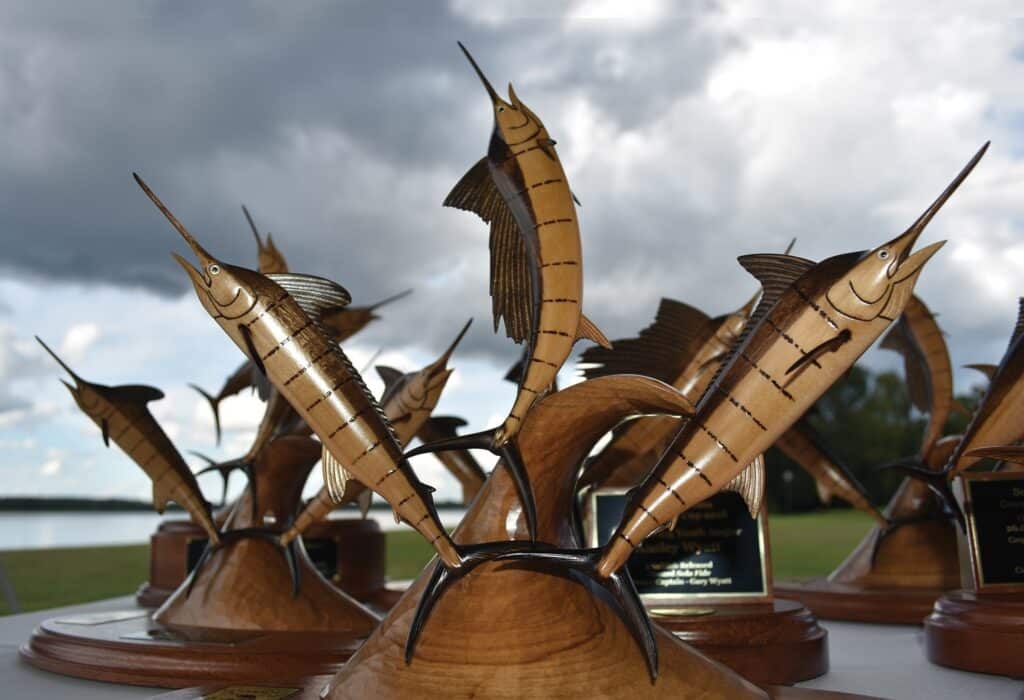
Coming up with new ideas is also challenging when 99 percent of his business comes from tournament directors who are all looking for something no one has seen before. “It’s as niche as a niche market gets,” Chris says, “and these clients look to me to relieve some of the stress that comes with running a fishing tournament. I create handmade products that are ready to be presented, trophies that my tournament directors are proud to give away.” And by all accounts, the winners are equally thrilled to bring those trophies home. “My trophies are functional art,” Chris says. “I try to capture the adrenaline rush of tournament fishing by making the fish look like it’s in attack mode.”
When I asked about the creative process of turning a block of wood into billfish and other gamefish, Chris got somewhat overwhelmed about where to start. He immediately turned to a classic quote from one of the world’s most famous artists, Michelangelo: “Every block of stone has a statue inside it, and it is the task of the sculptor to discover it.” And time and again, he does just that, discovering a one-of-a-kind reminder of a well-deserved win.
R. Hanes Hoffman Jr., Brevard, North Carolina
While Costello frees billfish from wood, artist Hanes Hoffman gives them life with copper and flame. The owner of Bluewater Copper Works, Hoffman has been creating gamefish copper art for more than two decades. His sculptures are wildly vibrant, exploding with iridescent colors and vivid markings. It takes a careful hand to coax life from metal. But he’s managed to dial it in, creating trophies and elaborate wall installations that showcase entire ecosystems.
Hoffman didn’t discover this passion while growing up in Winston-Salem, or even immediately following his graduation from the University of North Carolina at Chapel Hill. He would first need to travel the world before settling into a career as a copper artist.
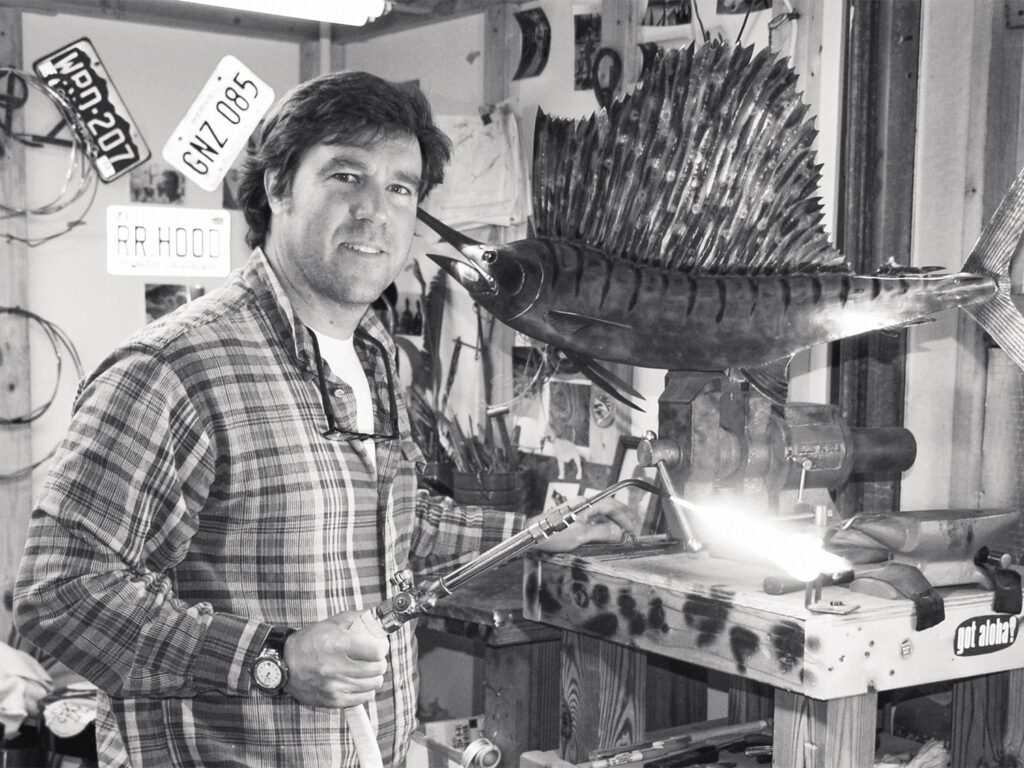
In his early 20s, Hoffman moved to the Florida Keys, working as a mate out of Whale Harbor. That was his first real introduction to work in the fishing industry, a world that certainly piqued a lasting interest.
After his stint as a mate, he lived in Idaho, Alaska, New Zealand, Australia, Southeast Asia and, later, Hawaii. He then picked up and moved to Colorado, where he managed a blues club and co-owned a restaurant. Years later, he made his way back to North Carolina, settling into seaside life in Wilmington.
Even after all of his travels, he wasn’t exactly sure what he wanted to do for work. It didn’t take him long to figure it out. With parents who always supported his adventures, even at a time when most were encouraging grad school and finance jobs, Hoffman’s folks encouraged him and his two sisters to indulge in art and pursue whatever they were proficient at and enjoyed.
Hoffman found work at a local metal shop, and it was there that he discovered a fascination with copper. The shop owner taught him basic joining techniques and gave him the opportunity to try his hand at copper work. He made his first copper fish, a flounder sculpture, in 1997 and continued to experiment.
“I started out by taking my work down to the docks in plastic tubs,” Hoffman recalls, “where the fishermen would buy them from me on the spot. They were relatively inexpensive and not as refined as they are now, but I soon realized that this kind of art was something I wanted to pursue. I started feeling out tournament directors about awards, and eventually got the attention of the Cape Fear Blue Marlin Tournament.”
Since then, Hoffman has created trophies for the Big Rock Blue Marlin Tournament, the Virginia Beach Billfish Tournament, the Pirate’s Cove Billfish Tournament and many others. He offers a variety of trophies, all handcrafted and unique, from drop-down and free-standing or plaque style to single fish and whole habitats—his favorite. He estimates that at one time, he was making trophies for 15 to 20 tournaments per year, but he has since downsized to allow for creative custom commissions.
His creative process, while difficult, is poetic. “I hand-draw the shape of the fish, then cut it out with shears,” Hoffman explains. “The only power tool I use is a drill, to create the eyehole(s); otherwise, I’m using chisels, pliers and files. After the piece is crafted, I clean it very well and scrub it for impurities. As I work on them, the fish are flipping their tails around, making them seem like they’re alive. But then the true art comes in: I literally ‘paint’ the fish with a flame to bring out the stripes, dots and markings.”
The iridescent hues you see on one of Hoffman’s finished pieces aren’t visible when he begins the project. Nor does he slather on paint to get those flashes of pinks, yellows and blues. By painting with flame, he brings those colors out of the copper by way of a jaw-dropping reaction when the heat hits the metal. “All of those colors live in the copper,” he points out with great enthusiasm. “Copper is extremely conductive, so using a 900-degree flame to bring out those colors is a tremendous test of patience. I have to anticipate the color change, stop, and watch as it continues to evolve. If you apply the flame for too long, you could anneal the metal, which ruins the piece.”
As far as Hoffman knows, few artists use this technique, one that he never considered a possibility until playing around with copper early in his career. “When I first started brazing, I saw that color flash while applying heat,” he says, “and that triggered me to think that I might be able to bring color to my pieces.”
Hoffman has come a long way since that first spark of creativity, and when asked how long it takes to complete a piece from start to finish, he replies with a quippy but honest answer: “It takes 26 years to bring a copper billfish to life, 26 years of flame-painting practice and progress.”
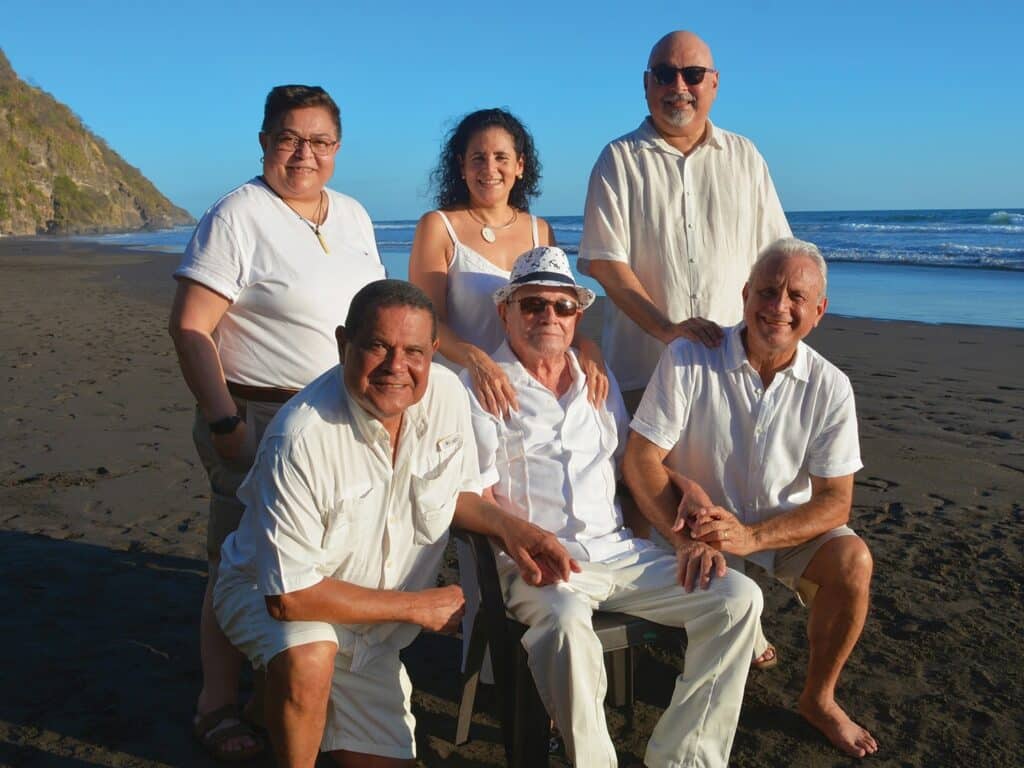
Maru Panameño, San Salvador, El Salvador
While Hoffman and Costello create trophies within the solitude of their private workshops, artist Maru Panameño oversees a team of 75 as the art director of Marine Trophies, a division of the Torogoz Co. Her sleek designs have captivated tournament directors worldwide, awarding fishing teams and anglers in more than 45 countries. The Bisbee’s Black & Blue, the Virginia Beach Billfish Tournament, the Bermuda Triple Crown and the Cap Cana Classic are just a sampling of events that award trophies designed by Panameño.
Growing up in El Salvador, Panameño has always loved art, so it only seemed fitting that she would choose to study graphic design at university with the hope of a career in the arts. After graduation in 1992, she took on a series of small jobs at the metalizing company owned and operated since 1976 by her father, Oscar Panameño.
Alongside her father, mother, three brothers and twin sister, Panameño took note of the extensive processes necessary to bring the creative ideas she had in her head to life. “As I was working those smaller jobs, I learned the different production processes,” she recalls, “and little by little, I got more involved in the design of new products.” Panameño was always passionate about the sea, so when a client asked her to create fishing trophies for a tournament in El Salvador, she got very involved in the design. It’s no surprise that both the tournament organizers and the fishermen loved what she turned out.
Before that experience, the family business hadn’t done much work with fishing tournaments. Panameño saw the potential opportunity for growth and immediately started researching the fishing-tournament industry, including some of the biggest in the world, discovering a long list of potential clients. It was an opportunity she and her family couldn’t pass up, so the young artist quickly began designing a collection of 12 signature tournament trophies.
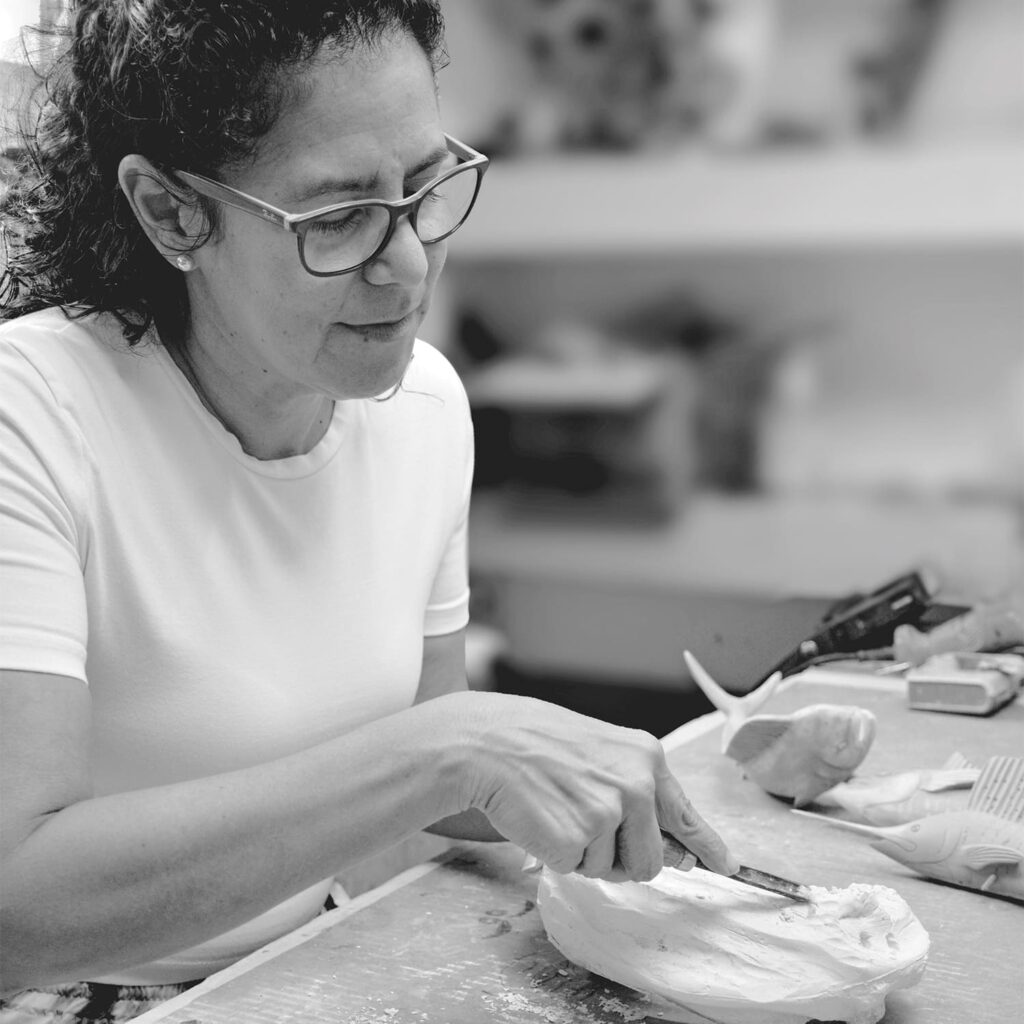
And while her clientele grew closer to home, her international recognition was yet to come. A trip to the Miami International Boat Show would change everything.
Anytime you consider expanding a business, it comes with risk, but Panameño’s family fully supported her vision. And there might not be a better place to access the industry than an international boat show. And it was there, in Miami in 2011, that Panameño exhibited her collection of metal-coated trophies, catching the attention of tournament directors from many popular sport-fishing destinations. Suddenly, the family found themselves in the tournament-trophy business, so much so that they went on to establish their Marine Trophy division.
Since then, Panameño has made some 8,000 trophies for fishing tournaments around the globe, each handmade and based on one of her beautiful designs. “It’s easy to design a trophy on paper,” she says, “but the difficult part is to translate that initial concept into a three-dimensional piece that adapts to the production processes already in place.
“First, I sketch my design on paper or with my computer,” she continues. “Then we create a prototype in Plasticine or plaster, which will later be used to make a silicone mold. The mold is used to produce the trophy replicas from a mixture of marble powder. After that, a member of our team of skilled artisans will handle the metal-coating process, along with any final touches. Lastly, the trophy is coated with a transparent lacquer to protect the finish.”
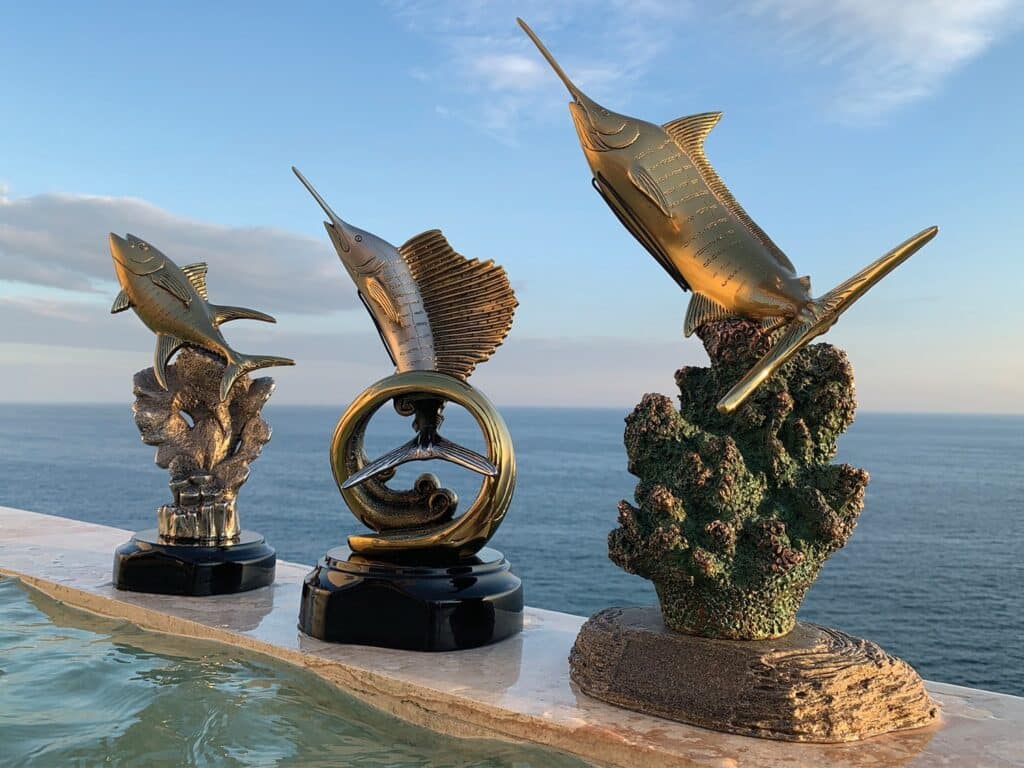
With an operation of this caliber and depth, Panameño has the flexibility to easily change her designs based on the customer’s needs. As a result, she’s able to offer a wide variety of options to her growing list of clients. Every year, she adds new designs to her already established collection to keep her work fresh and her patrons happy. And although she’s led the company to great success, she admits that creating trophies such as these still comes with challenges. She has big ideas, but they can’t always be executed, at least not yet. “I want everything to look exactly as I have it in my head, but I have to respect the technical limitations of the production process,” Panameño says. “Nevertheless, I really enjoy it when a piece finally comes together.”
Each one of these extremely talented artists has managed to carve out their own little place in a business that, as Costello puts it, is about as niche as niche can get. Through their trophy designs, Chris Costello, Hanes Hoffman and Maru Panameño offer up a little bit of themselves, revealing a brief and polished look at who they are and how they came to be artists.
It takes an enormous amount of courage to share something as deeply personal as your life’s work, and each one of these talented trophy-makers faces that challenge head-on, with the same fervor that we have come to expect from the world’s most accomplished anglers and fishing teams.
